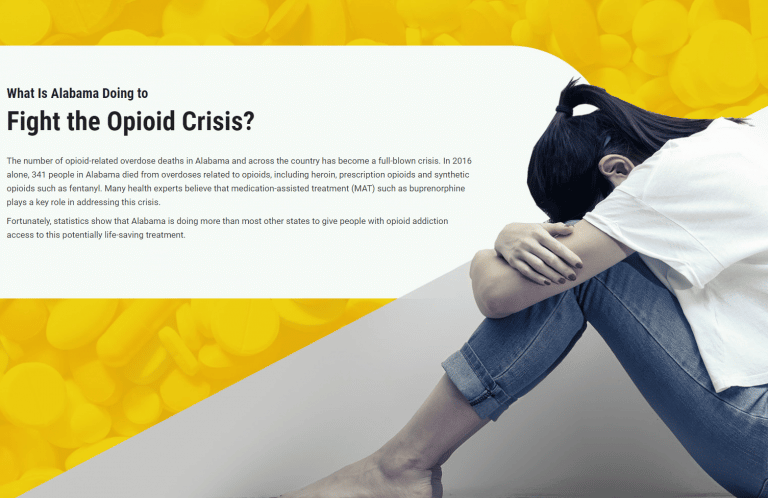In the late 1990s, no one knew that prescription opioid pain relievers would become a public health emergency two decades later. According to the U.S. Department of Health and Human Services (HHS), healthcare providers began prescribing opioids more regularly after pharmaceutical companies claimed that the pain relievers were not addictive.
In 2016, 2.1 million people in the U.S. had an opioid disorder and 2.1 million misused opioid drugs for the first time. That same year, 11.5 million misused prescription opioids. While misusing prescription opioids doesn’t always lead to addiction or death, it plays a major role in the opioid crisis.
Opioid Use in Alabama
Today, an estimated 116 people in the United States die from an opioid-related drug overdose every day. While every state in the U.S. struggles with opioid misuse and fatal overdoses, Alabama has seen higher rates of overdoses than others.
According to the National Institute on Drug Abuse, in 2016, there were 343 opioid-related fatal overdoses in Alabama, which is a rate of 7.5 per 100,000 people; this is nearly half the national rate of opioid-related deaths. 157 deaths were directly related to synthetic opioids such as fentanyl, 126 were due to heroin use, and 124 were related to prescription opioids.
Not only can opioid misuse lead to death and dependency, but it has other health consequences as well.
Women who abuse opioids during their pregnancy have a greater risk of having a baby with Neonatal Abstinence Syndrome (NAS). Newborns with NAS experiences withdrawal symptoms from drugs (in this case, opioids). According to the most recent statistics available through the National Institute on Drug Abuse, the cases of NAS in Alabama increased from 170 in 2010 to 345 in 2013.
The opioid crisis is also responsible for increasing HIV prevalence and diagnoses related to injection drug use (IDU). In 2015, of the new HIV cases in Alabama, 5.5 percent of new cases in males and 7.6 percent of new cases in females were directly related to injection drug use. Additionally, there were 70 cases of Hepatitis C, reported in 2015, due to IDU.
Addressing The Opioid Crisis
At a national level, the HHS strives to address the “public health emergency” by doing the following:
- Make access to treatment and recovery services easier for everyone
- Encourage and promote the use of overdose-reversing drugs
- Gain a stronger understanding of the crisis through public health surveillance
- Offer support for research on pain management and addiction
- Find better and safer alternatives for pain management
These are all important steps that can help end the opioid crisis, but public education is crucial as is passing laws that aid in ending the public health crisis. Educating the public about the dangers of opioids is an important first step in preventing people from misusing the drugs in the first place.
Prescription drug monitoring programs (PDMPs) are becoming a popular and effective way to reduce the risk of opioid misuse, addiction, and overdoses. PDMPs are designed to help improve how and when opioids are prescribed and protecting the patient. In Alabama, prescribers are not currently required to check with PDMP.
Finally, in order to take part in any of these programs, state health departments must consult with the Centers for Disease Control and Prevention (CDC); state departments in Alabama have failed to complete the consultation with the CDC.
It’s clear that there are programs available and important steps to take in addressing and combating the opioid crisis. Although the state of Alabama has some plans in place for fixing the opioid problem, there are additional options and resources that should be considered.







